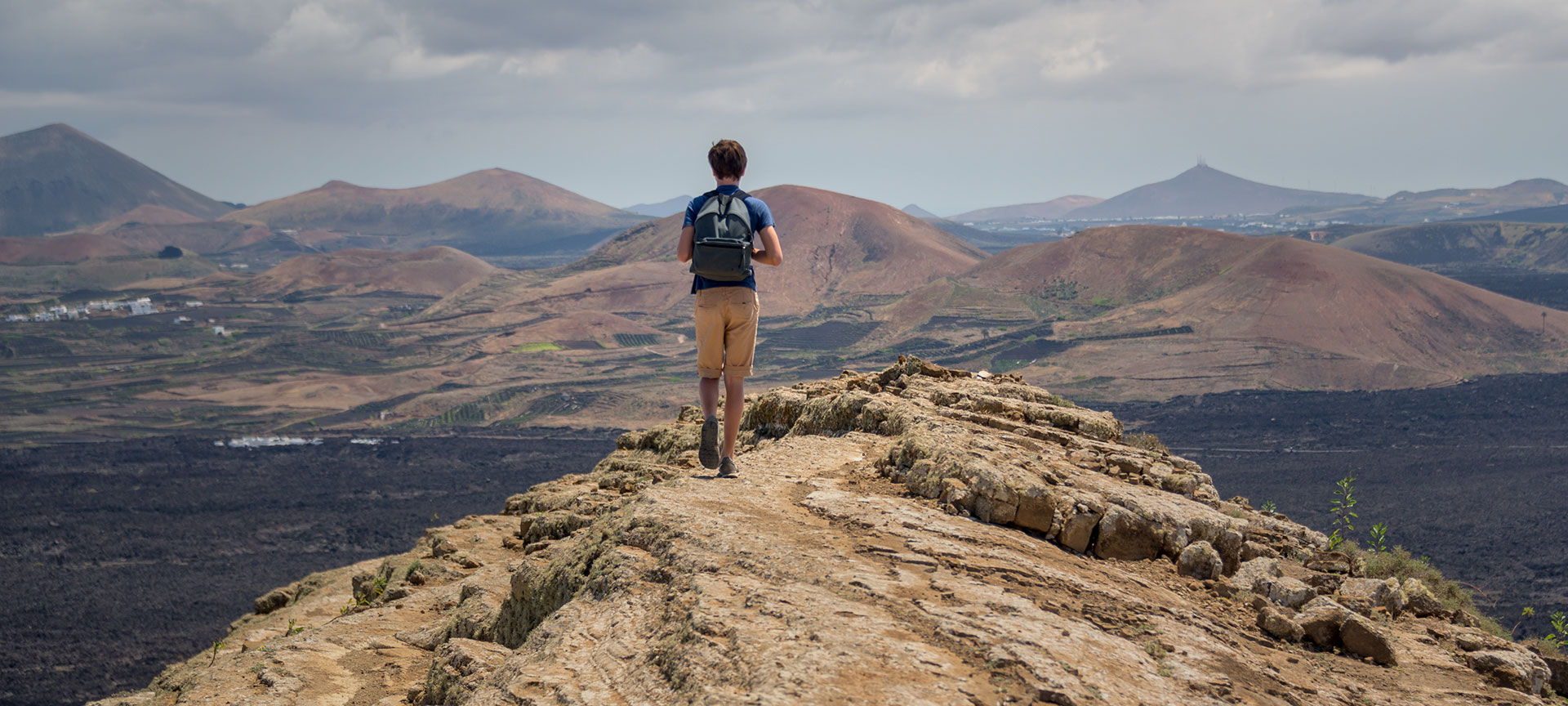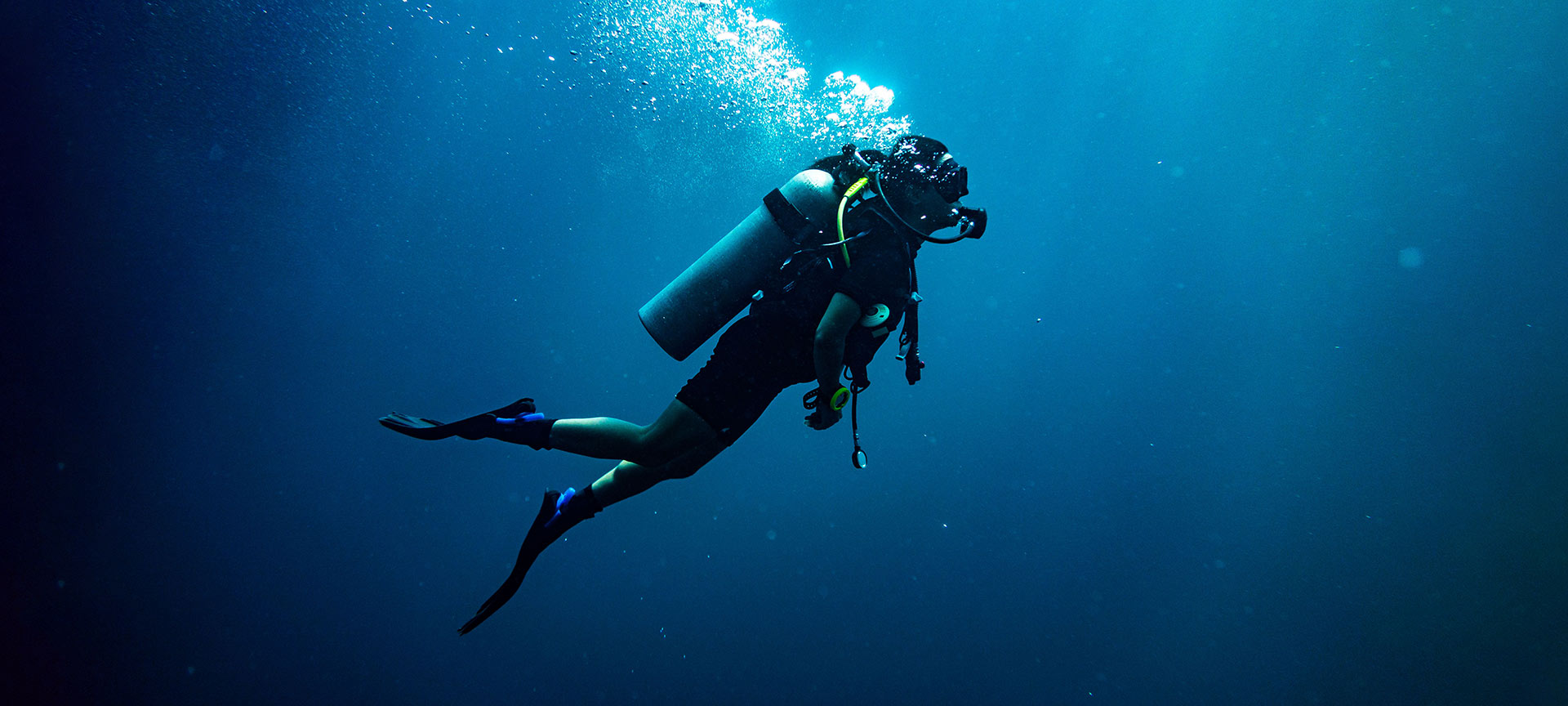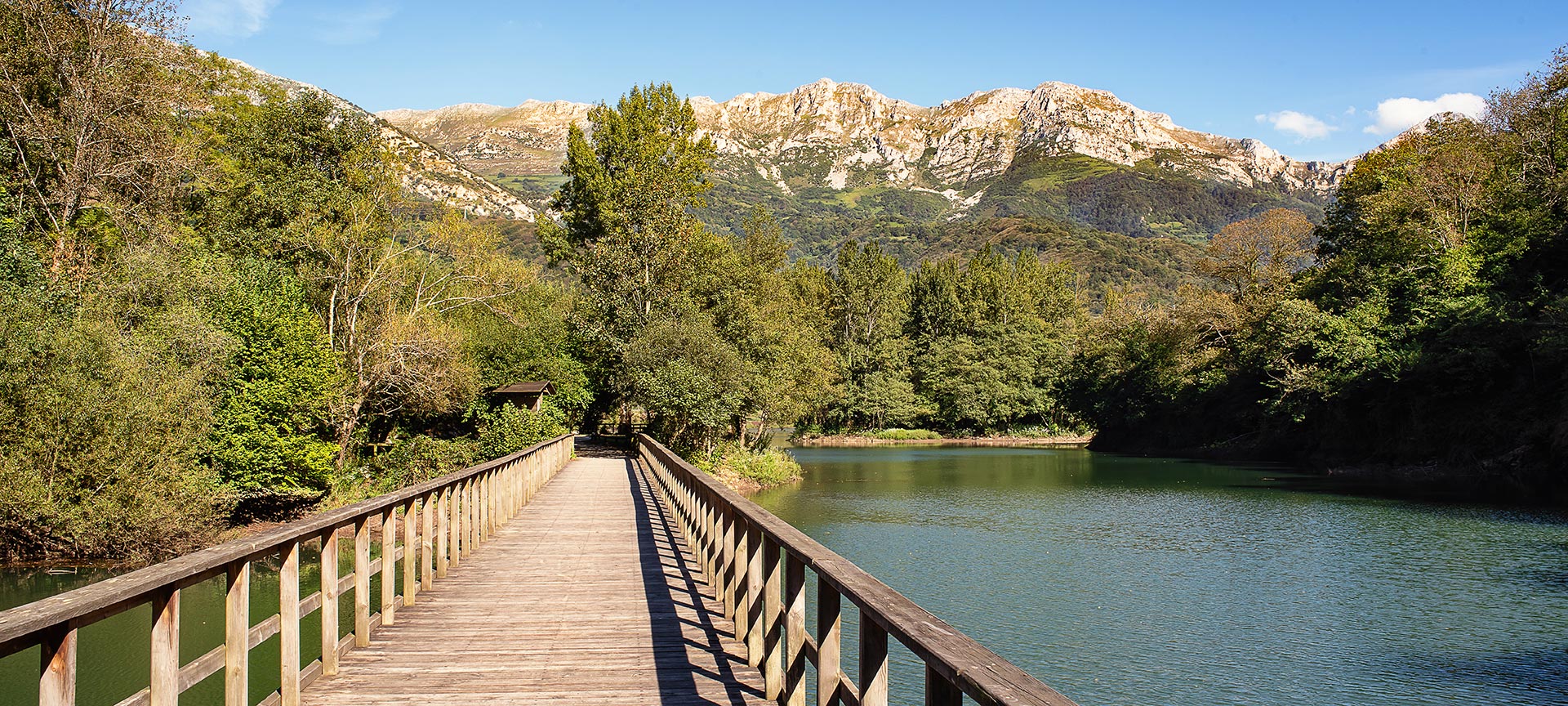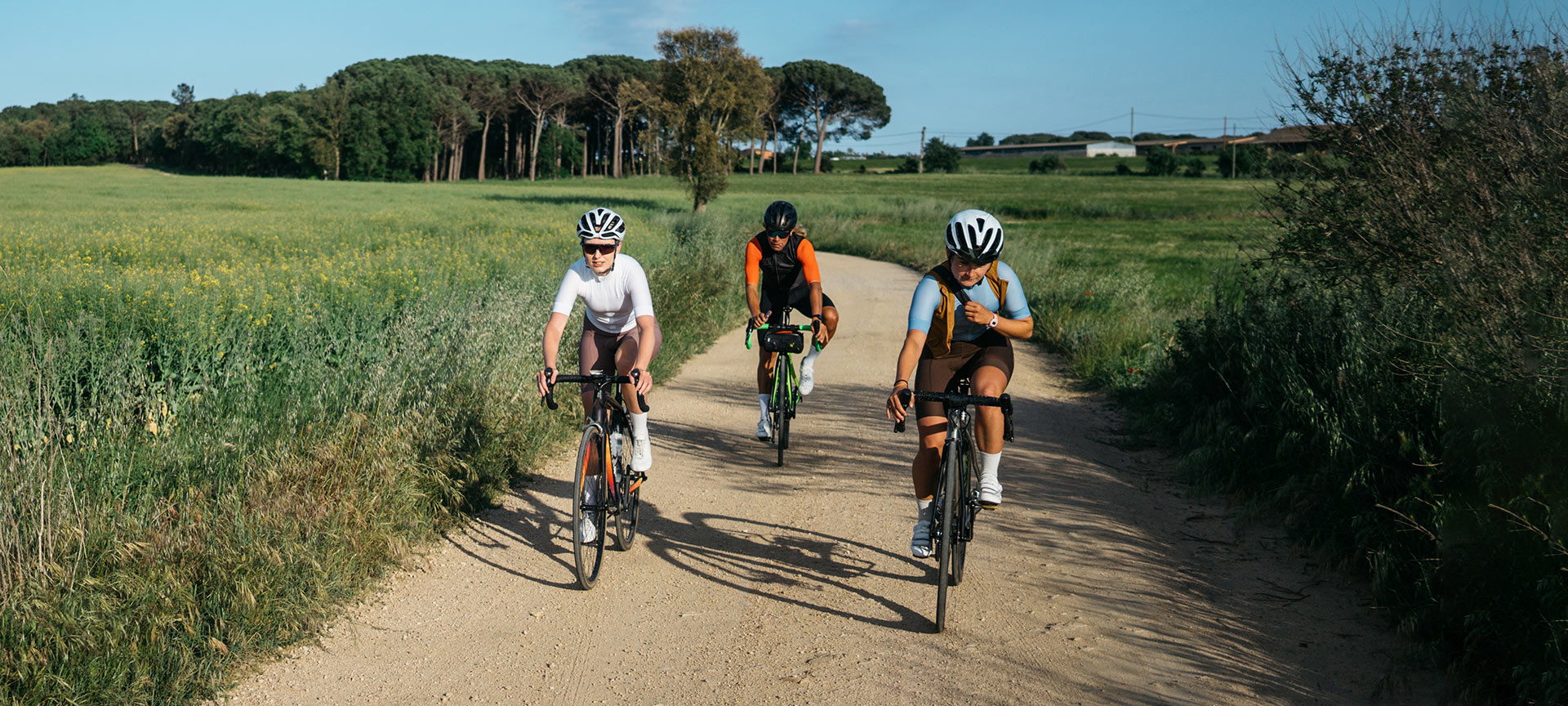Did you know Spain is the world’s second ranking country in UNESCO biosphere reserves? At first glance, geoparks are natural spaces with landscapes of extraordinary beauty. But visitors can discover much more: their mountains, rock formations, and soil all reveal the history of humanity and our planet. That’s why, since 2015, UNESCO has recognised their value with the Global Geopark label – and in Spain there are 18 of them, open for geotourism.
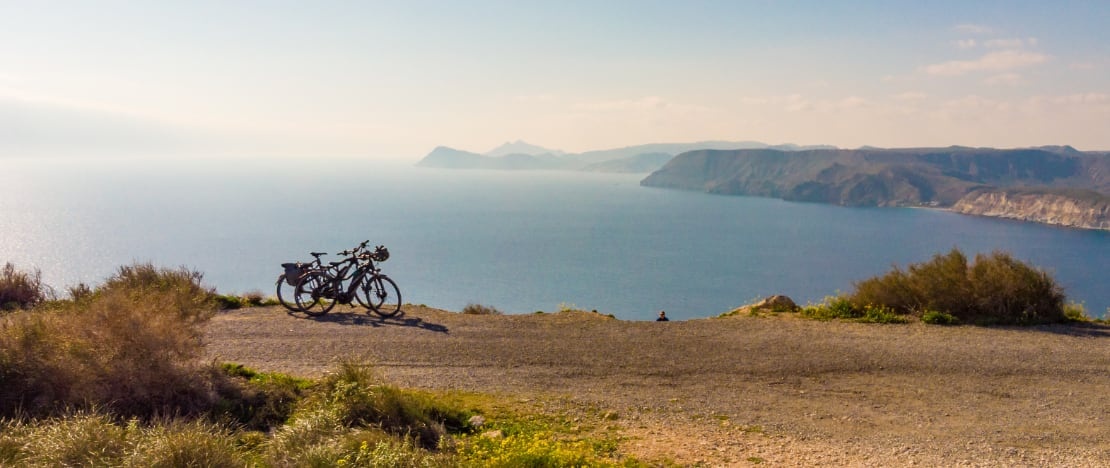
A place where winter never comes, a coast of rugged cliffs and hidden coves. The result of the impact between the tectonic plates of Africa and Europe, its volcanic landscape is home to little fishing villages of whitewashed houses. You can explore it on all-terrain vehicles, on horseback, or hiking. The clear coastal waters reveal a sea bed rich in wildlife and volcanic formations which can easily be enjoyed close up with snorkelling and scuba diving available for all levels on the Isleta del Moro. If you get the chance, round off your trip with a boat tour along the coast and discover secret coves you’ll remember forever.
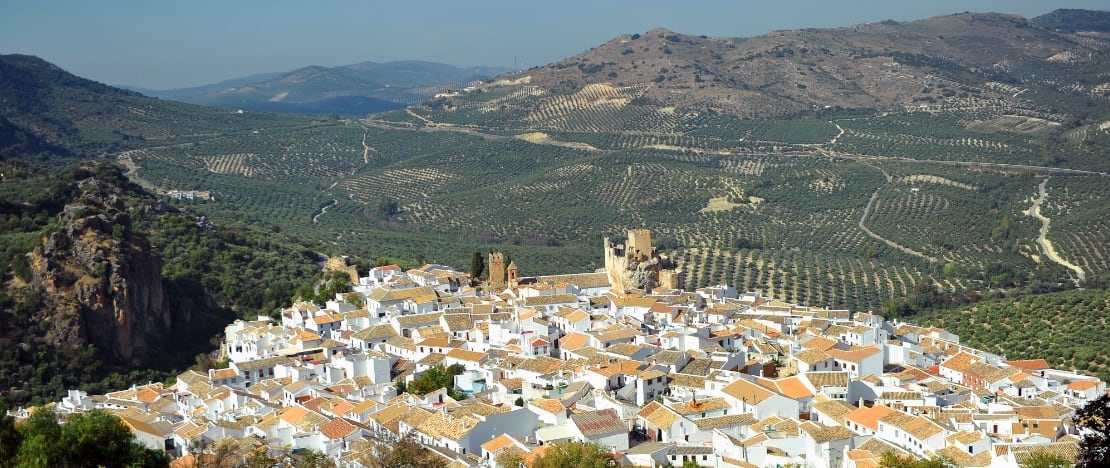
Water, in the form of rivers and springs, is the element that has transformed this territory, carving eccentric shapes into the limestone. This is a land of olive trees and little villages of whitewashed houses nestling among the mountains, like Zuheros, Cabra, Luque and Doña Mencía. This area is ideal for exploring by bicycle, with plenty of special routes, such as Vía Verde del Aceite. If you prefer hiking, the trails of La Nava and Cañón del Río Bailón are the most popular for combining with car tours. You will discover numerous caves, like the Los Murciélagos (in Zuheros with guided tours). Take note of a must-see: peer over the Balcony of Andalusia (in the chapel of Nuestra Señora de la Sierra, in Cabra mountain range).
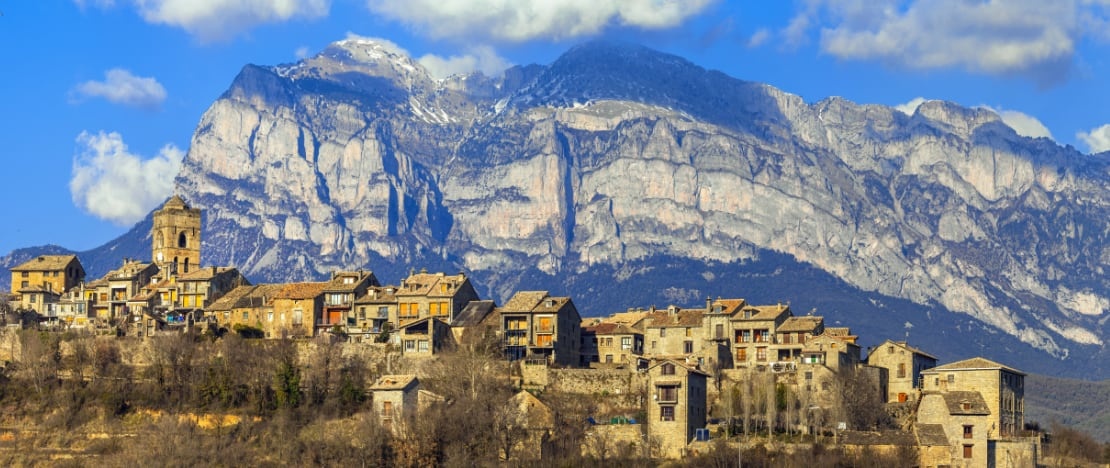
The Pyrenees Geopark offers a journey through the origin of the mountains, the last glaciers of Spain, vast caves among vertiginous canyons and gorges… and even the former home of the cave bear: the Tella Bear Cave. The geopark offers numerous hiking and mountain biking trails that offer some of the most spectacular landscapes. Climbers can enjoy the via ferrata next to the Sorrosal waterfall, and a geo-mining tour of several different mines that once operated in the area. Other geological sights include the landscape around Eripol (there is a viewing point on the outskirts, next to the cemetery, where you can see how the gradual retreat of the sea over centuries shaped the mountains) and the glacier of Monte Perdido (in Bielsa). The visitor centre is in Aínsa.
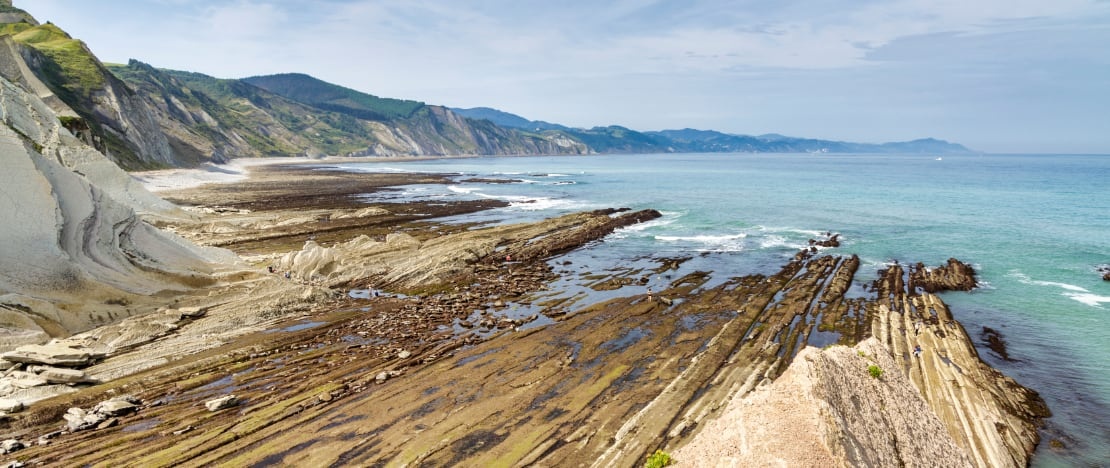
A living display of 60 million years of history. This is the Flysch route, visiting the most striking geological feature of the Basque coast, in the municipalities of Zumaria, Deba and Mutriku. These 13 kilometres of stunning cliffs and outcrops of sedimentary rocks known as flysch are of interest to geologists, not least because they help them study pre-historical periods such as the extinction of the dinosaurs. Itzurun beach (Zumaia) is probably the best place to see the flysch. This is also where you'll find the visitor centre. Boat tours leave from here, where you can see the beauty of the cliffs from the sea. If you can, wait to see the sunset from the beach or the sea, because it’s quite unforgettable. Further inland, the Geopark includes green valleys and mountains with caves boasting World Heritage rock art, such as the Ekain cave.
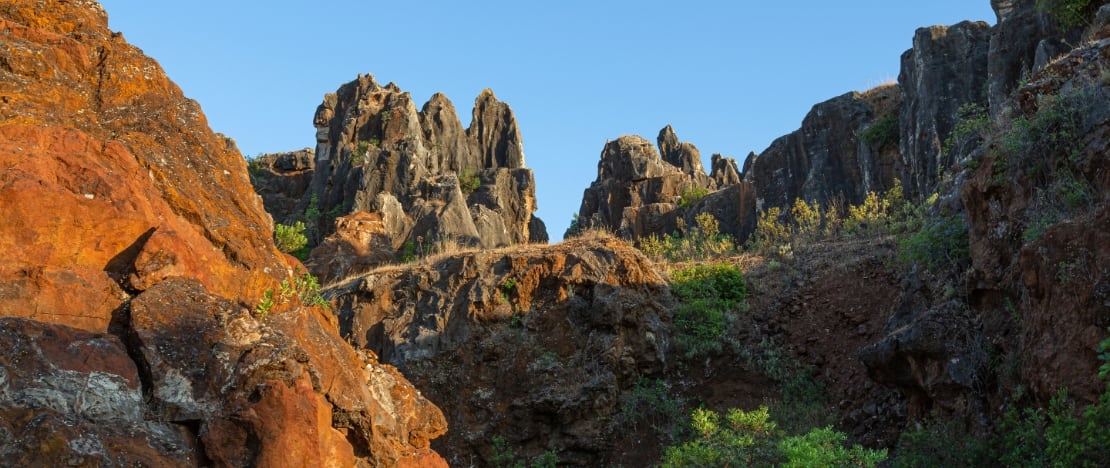
Here the landscape has been shaped over 700 million years. From one of the world’s largest collections of jellyfish fossils to the traces revealing a meeting of tectonic plates (in Beja-Acebuches), the Sierra Norte de Sevilla Geopark offers several geotourism routes through important points of geological interest. Plus, Sierra Norte de Sevilla Greenway from the natural monument of Cerro del Hierro to the waterfalls, known as the Huesna or Huéznar falls. Cerro del Hierro is a former iron mine that uncovered impressive rock formations, and Huesna boasts a series of waterfalls and pools. Along the way, you’ll have the chance to see the cinereous vulture and the Spanish imperial eagle in flight.
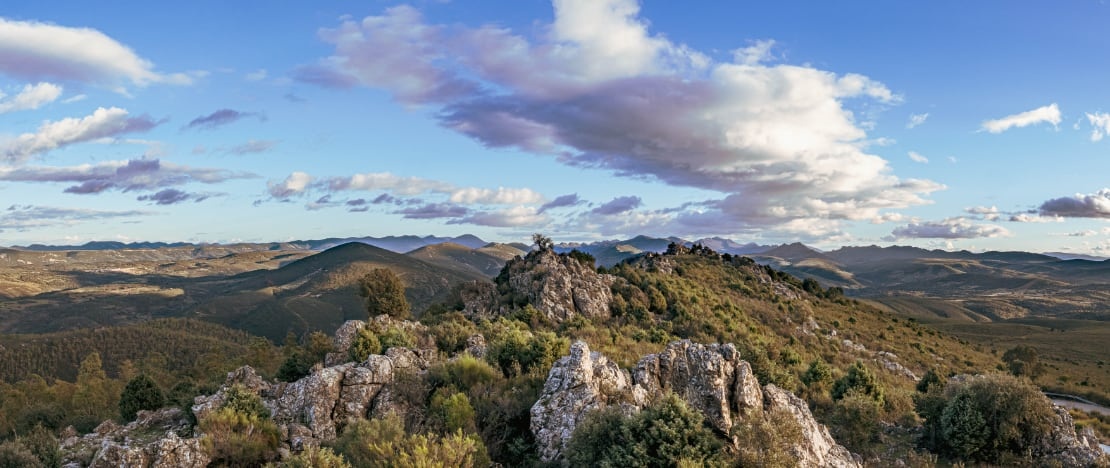
This landscape was formed in Pangaea, around 300 million years ago. Climbing to the highest point, the La Villuerca cliff, you will get a very descriptive panoramic view of the geopark with a landscape of mountain ranges, valleys and scrubland. You’ll find dense oak and chestnut woodland with fauna including the golden eagle, peregrine falcon, griffon vulture and eagle owl. Its points of geological interest include Estrecho de la Peña Amarilla (a ravine in Alía); Marmitas de Gigante del río Ibor (in Bohonal de Ibor), a gorge created by water erosion where you can swim if the weather is warm, and the blockfields of Peraleda de San Román (an area of rounded and mushroom-shaped rock formations, especially the enormous boulders of Cancho de Valdecastillo). Near this area, you can find the Jerte Valley (noted for its cherry blossoms in spring) and Guadalupe and the famous Royal Monastery of Santa María de Guadalupe, a World Heritage site.
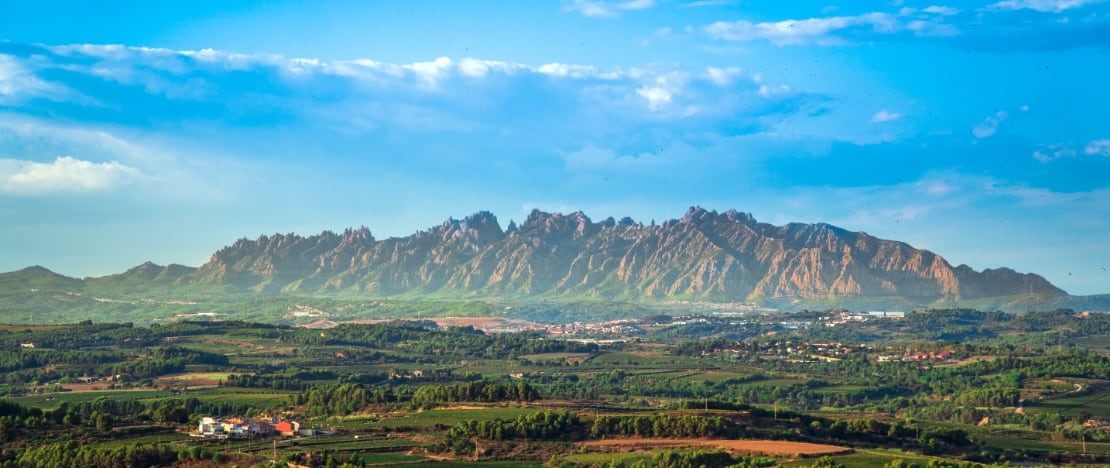
Did you know that the centre of Catalonia was a large isolated saltwater basin? This was at the time the Pyrenees were taking shape, 36 million years ago. The water evaporated, leaving a beautiful landscape which is now this Geopark. Madrid's Montserrat mountain , with its peculiar rounded rock formations, is one of its symbols. A visit to the area is strongly recommended, including the Monastery of Santa María de Montserrat and some of the caves under the mountain. In nearby Moyá (Barcelona) you can visit the Toll Caves, with important prehistoric and palaeontology finds. To enjoy the geopark in a different way, we recommend the “Geopark Wine Route” through the wineries of the Pla de Bages designation of origin wine.
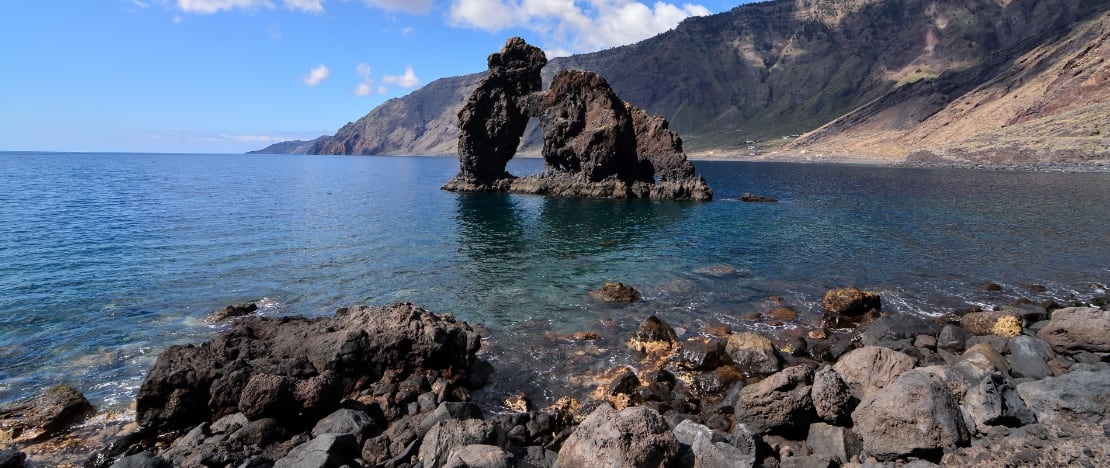
The landscapes of El Hierro are famous for their unique beauty. The island is volcanic in origin, like all the Canary Islands, and it’s easy to find lava flows, coulées, volcanic sediments and rock formations of great geological interest. In fact, volcanic activity is still going on and there was an underwater volcanic eruption in 2011. A good place to find out more about its volcanoes is the Geopark visitors’ centre in El Pinar. To discover the volcanic effect on the landscape, a good option is the Viewpoints of Jinama, La Peña, Bascos and La Llanía. Whether you are driving or cycling, the road from Valverde to San Andrés reveals all the variety of landscapes on the island, with agricultural areas, sea views and steep cliffs. In San Andrés you can hear about the legend of the Garoé tree and the phenomenon of horizontal rain. Finally, if you visit La Dehesa, you can see the effect of the trade winds on El Sabinar, with trees of spectacular shapes.
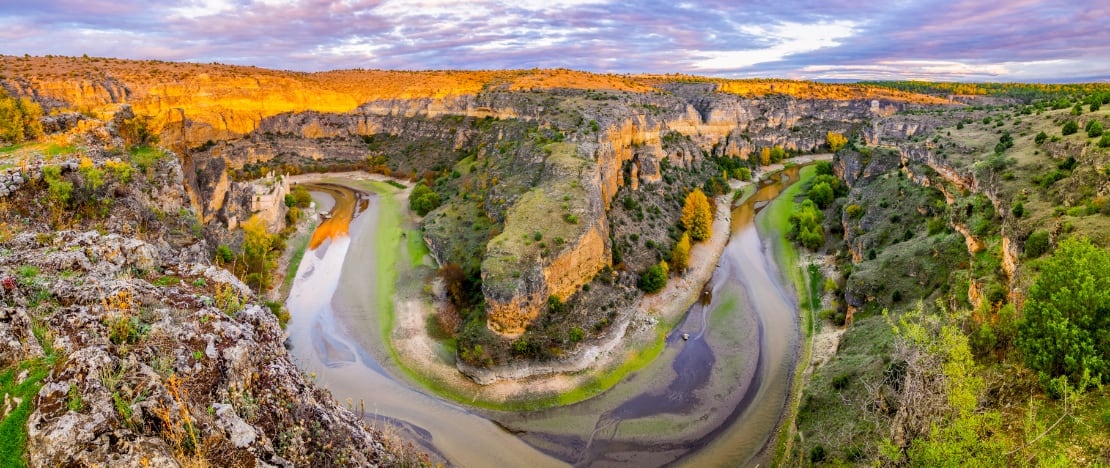
Ancient rivers and warm seas shaped this terrain of deep ravines, unique trees and points of geological interest. Interesting sites include fossil deposits of marine creatures over 430 million years old (graptolites), close to Checa, and the fossil forest of Sierra de Aragoncillo. To visit this vast geopark of more than 4,000 square kilometres, you will have 11 marked georoutes and several interpretation centres. We recommend visiting its miradores (viewing points) to see the spectacular scenery, very different from season to season. Barranco de la Hoz is always one of the best. In autumn you can enjoy the changing colours on the riverbanks from the Mirador del Tajo viewing point. In winter, the Mirador del Pellejero looks out over snow-covered peaks. And in spring, the Mirador del Machorrillo offers beautiful views over the lake of Taravilla.
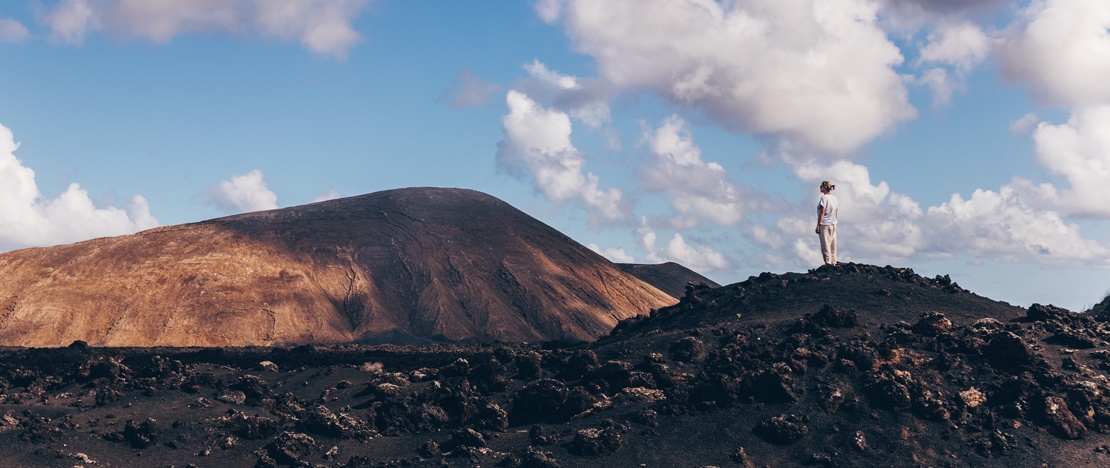
An island of mountains formed by fire and extraordinary volcanic landscapes. The Timanfaya National Park is a must-see, with a tour of the Timanfaya volcanoes and surprising experiences like eating food cooked over lava. This terrain is full of thermal anomalies and can reach 250 ºC in some areas, where you can see boiling water erupting in geysers. Tinajo is a town with plenty of geological sights, such as El Cuervo volcano, Montaña Colorada and Caldera Blanca, all with easy hiking routes. Another of the most unique landscapes is that of La Geria, the vineyards that farmers have adapted to the volcanic peculiarities of the terrain.Volcanic influence can be seen throughout the island, including the coastline, with beaches such as Papagayo (in the south) or unique spaces such as the Charco de los Clicos or Lago Verde. The best way to explore the island in depth is by visiting the Art, Culture and Tourism Centres where the volcanic nature of the island is sustainably integrated with the art of César Manrique.
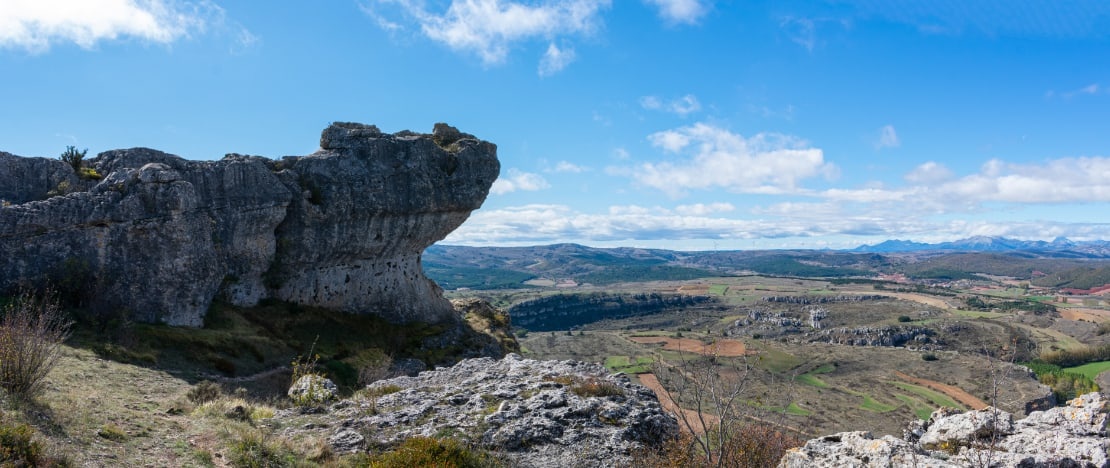
A rugged terrain with imposing ravines and rocky outcrops, where you can find more Romanesque churches, convents and monasteries per kilometre than anywhere in Europe. These are the distinguishing features of Las Loras Geopark, which offers plenty of routes to explore on foot, by car or mountain biking. Some of the most spectacular landscapes are the gorges of the rivers Ebro and Rudrón (in Burgos) and Las Tuerces (in Palencia), close to the interesting Cave of Los Franceses and the recommended Mirador de Valcabado viewing point. Throughout most of the park you’ll also find pre-Roman castros, Neolithic dolmens, and Iron Age sites like the castros of Monte Bernorio, Peña Amaya, Peña Ulaña and Monte Cildá. Many of the park’s waterfalls are easy to access, such as those of Orbaneja del Castillo (Burgos) and Covalagua (Palencia). The area is ideal for adventure sports like rock climbing or canyoning.
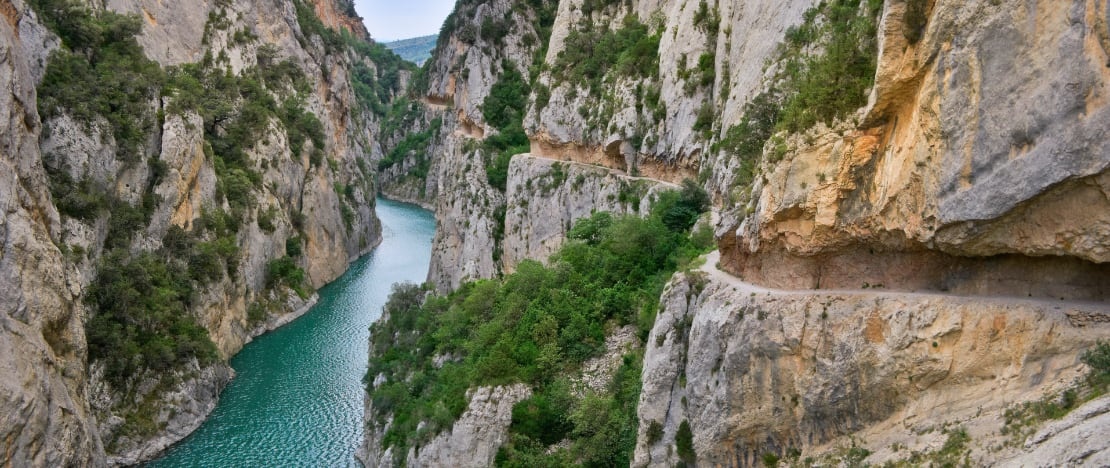
A UNESCO Geopark since 2018, its rocks tell the story of over 550 million years of history. This area was once under the sea, later dinosaurs lived here almost until their extinction, and today it offers a wealth of picture-perfect landscapes and one of the clearest skies for stargazing, recognised by Starlight. Its most photogenic spots include the Mont Rebei ravine, where a breathtaking path has been carved into the rock, up to 500 metres above the river. Its most famous route is called Quinto Lago, which passes through charming medieval towns such as Peramea, Beranui or Les Esglésies and ends at Lake Montcortés, whose waters come from an inner spring. Another good option to enjoy the diversity of the landscape is the Train of the Lakes, a period sightseeing train which runs from Lleida to La Pobla de Segur, through the scenery of the Pyrenees. There are also numerous fossil deposits in the Geopark, including dinosaur fossils and footprints. You can learn much more about it in the Dinosfera, in Coll de Nargó.
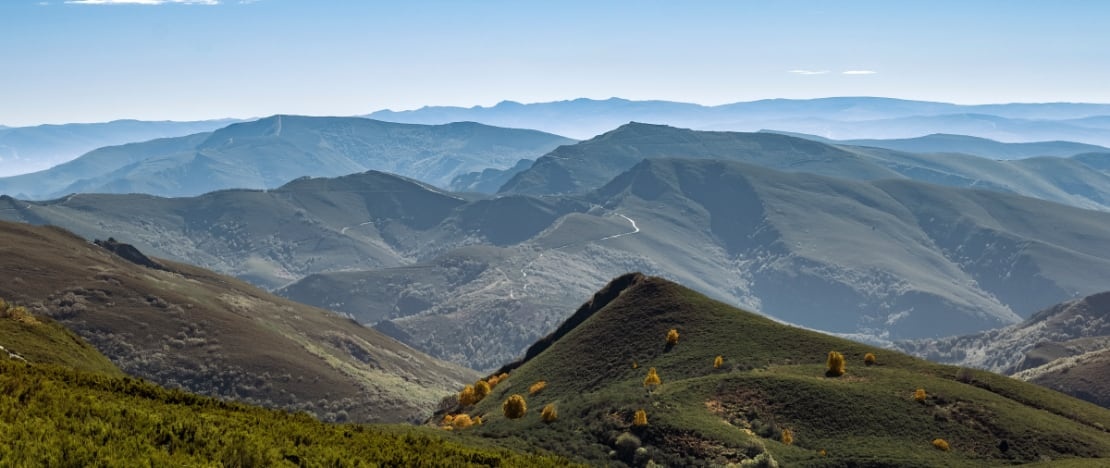
Here the landscape reveals how the terrain has changed over 500 million years and its close relationship with human activity. The area has been mined since the times of the Roman Empire, and slate was an important part of the local economy from the Neolithic era to just a few years ago. UNESCO made Sierra do Courel a Global Geopark in April 2019, emphasising the conservation of its medieval villages and monasteries, and the beauty of its ravines and valleys, formed by erosion. The Geopark includes the municipalities of Quiroga, Folgoso do Courel and Ribas de Sil, in Lugo province. Its unusual flora is another of its attractions, Among the most striking species are its orchids (guided tours are usually organised during the months of May and June to see them in their flowering splendor).
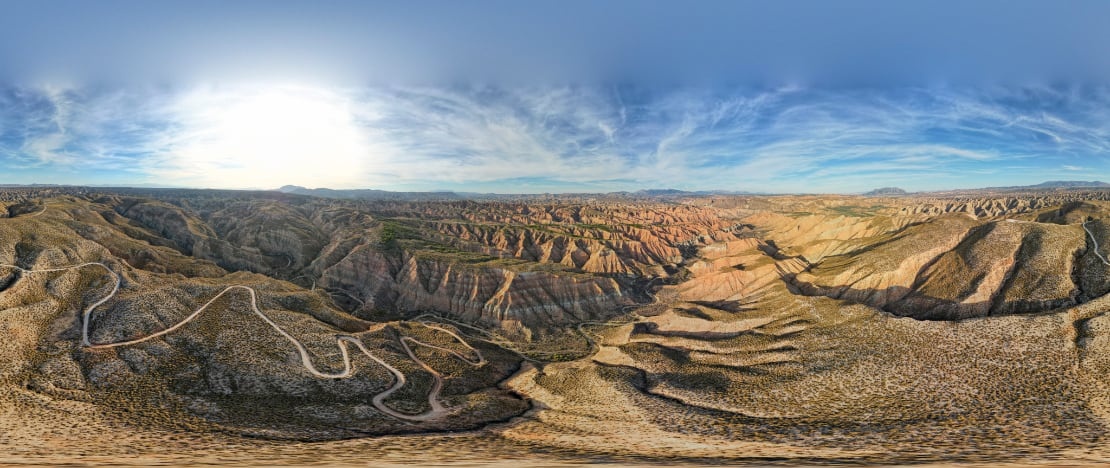
It became part of the worldwide network of Geoparks in 2020, and offers the opportunity to discover an environment which tells a story five million years old. Here you can see the traces of ancient seas, mountains which were once underwater lava flows, and one of Europe’s largest complexes of palaeontology sites with Quaternary vertebrates. Humans have also left their mark on the landscape, including cave houses carved into the mountainside, early precursors of today’s bioclimatic homes.
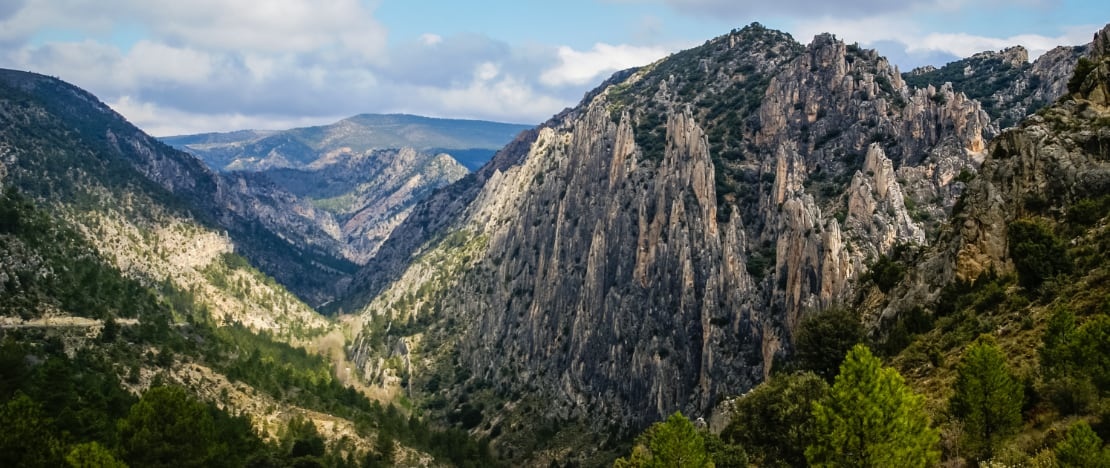
This is what people mean when they talk about places where the silence speaks. Tall peaks, deep gorges, rivers of clear water and paths through pine woods to tranquil, peaceful villages. You can see for yourself in towns like Cantavieja, Mirambel, Puertomingalvo or Aliaga. The landscape reveals the last 200 million years of Earth’s history, with a network of signposted routes for exploring it. Some of the most interesting natural monuments are the Crystal Caves of Molinos, the Organs of Montoro and the source of the Pitarque River. You can also see some of the archaeological sites forming part of the UNESCO World Heritage site Rock Art of the Mediterranean Basin.
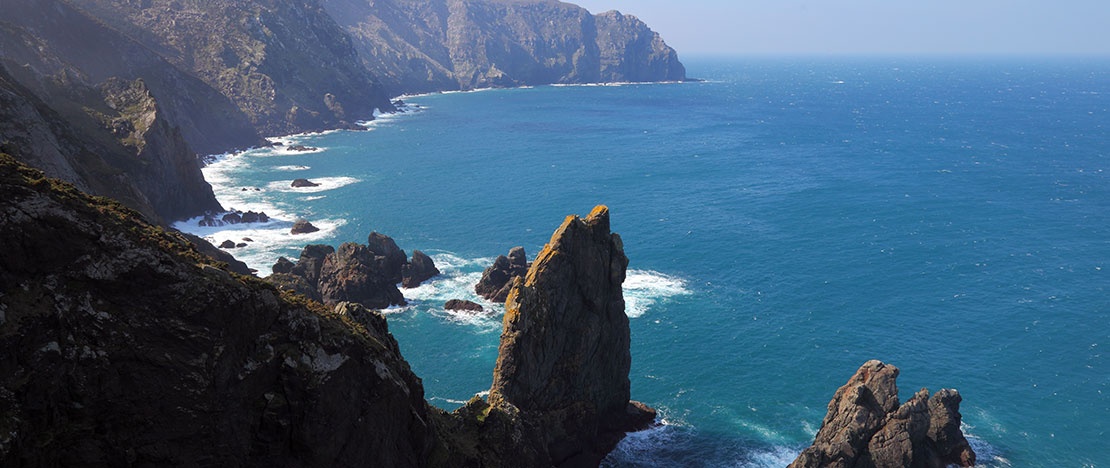
Ferrol and Ortegal are home to an exceptional geological heritage. Covering almost 800 square kilometres, this area is known for the awe-inspiring Serra da Capelada and Cabo Ortegal, the second most northerly cape in Spain. This environment offers a diversity of lithologies and unique reliefs, the result of the collision of the supercontinents of Laurasia and Gondwana 350 million years ago. In addition to the famous sea cliffs, you can see rocks on the Earth's surface that are normally found in the Earth's mantle, more than 70 kilometres deep. The area is also notable for its mining history, some of which you can visit, such as the Piquito mine in Moeche, which was the last underground copper mine in Galicia.
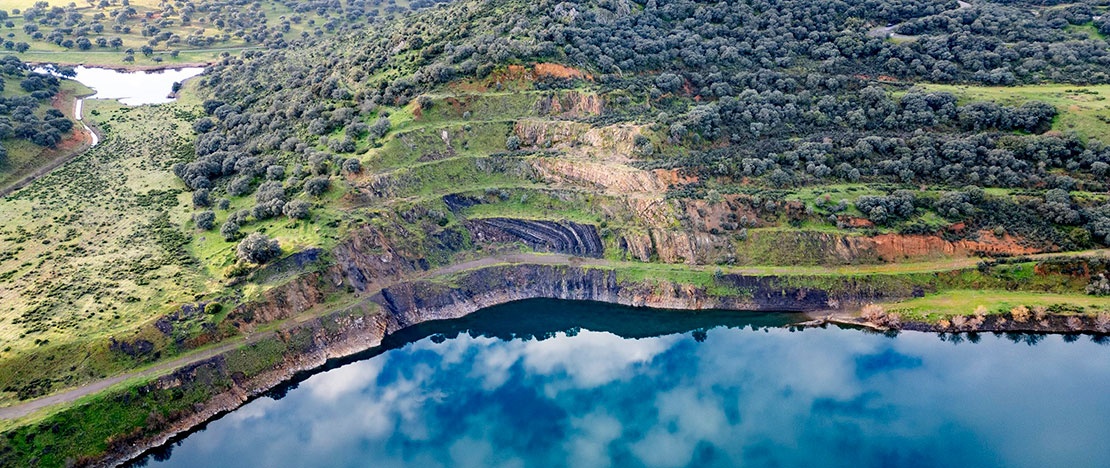
In the centre and southwest of the province of Ciudad Real, it covers 4,383 square kilometres and 40 municipalities. This geopark tells the long and complex history of some 500 million years of volcanic activity on Earth. The area boasts rich and valuable natural heritage, including the Alcudia Valley and Sierra Madrona, the Laguna del Prado Nature Reserve and the Piedrabuena Volcano Natural Monument, as well as cultural heritage such as archaeological sites, medieval castles, historical sites and palaces. Its main attractions include the giant Almadén mine, which has been declared a World Heritage Site by UNESCO, and the Puertollano paleontological site from the carboniferous period, a natural monument. You can explore its exceptional heritage with specialist companies approved by the geopark, who will guide you round all its geological sites, protected areas and places of cultural interest.
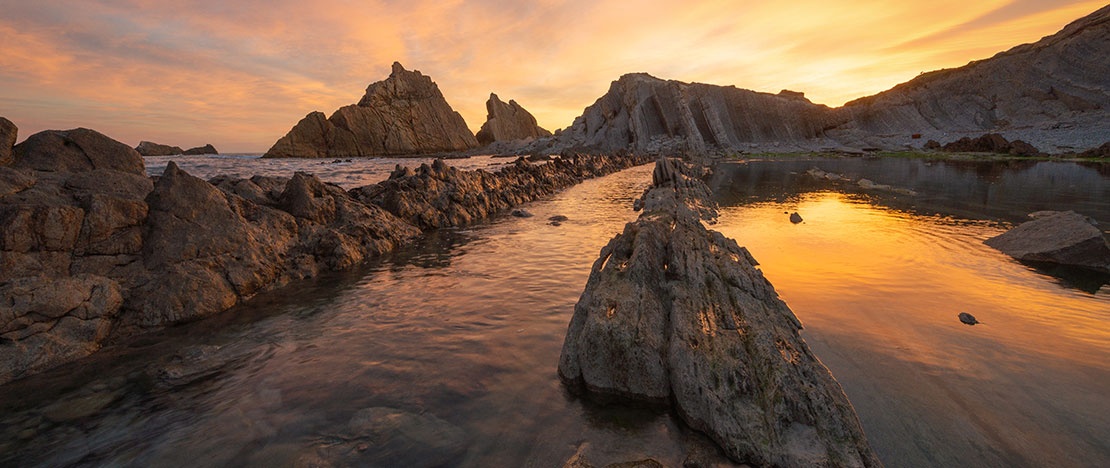
It covers an area of 345 square kilometres, combining land and marine areas across eight municipalities of Cantabria: Santander, Santa Cruz de Bezana, Piélagos, Miengo, Suances, Santillana del Mar, Polanco and Camargo. Spectacular cliffs, arches, islets, golden sandy beaches, dunes and estuaries make up a unique 20-kilometre coastal trail that makes for a spectacular experience even to those unfamiliar with geology. In the inland area, highlights include El Pendo cave, the Tremeo sinkhole, and the magnificent jewel that is the Altamira cave. There are many ways to explore the park, from guided geological tours by land and sea – including the possibility of scuba diving – to nighttime safaris through its wetlands, offering a chance to experience its remarkable biodiversity up close.
